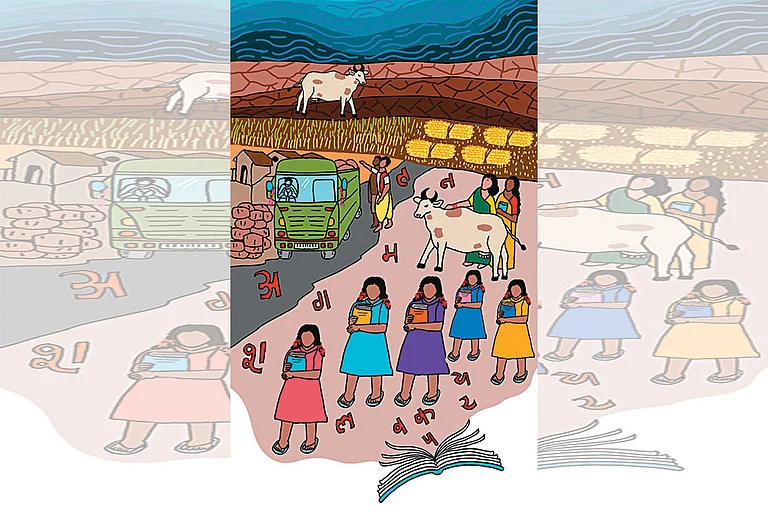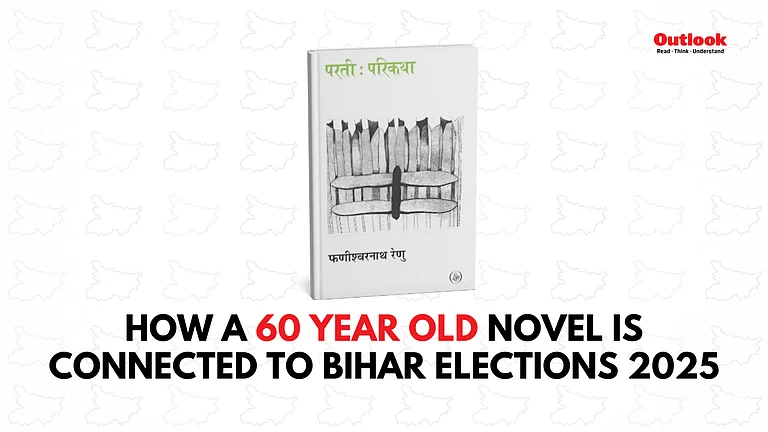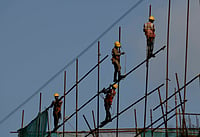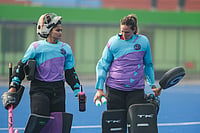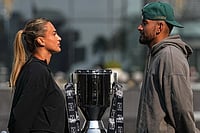
Once loyal to the Congress, Bihar’s upper castes shifted toward the BJP and NDA after the Mandal Commission era, becoming a consistent and influential vote bank.
Though only about 15 per cent of the population, upper castes are concentrated in key regions like Mithilanchal, Bhojpur, and Patna, giving them outsized political influence across state elections.
In recent elections, both the BJP and its allies have increased upper-caste representation while balancing outreach to OBCs, EBCs, and Dalits
Bihar has long been known as a state where voting is deeply influenced by caste. Its socio-ethnic diversity, comprising Upper Castes, OBCs, EBCs, SCs, and STs, often leads people to support leaders from their own communities. The phrase “Caste your vote, don’t vote your caste” carries little meaning here. In every election, parties across the political spectrum actively court different caste groups, relying on arithmetic and strategy to secure the support that could bring them to power.
Each party or alliance in Bihar has a fairly well-defined support base. Muslims and Yadavs traditionally back the Rashtriya Janata Dal (RJD), while Kurmis and many women voters tend to support Nitish Kumar. The EBCs, who had supported Lalu Yadav’s government throughout the 1990s, gradually shifted toward Nitish Kumar’s camp from 2005 onwards. The support of SCs and STs has historically been split almost evenly between the major alliances. In the 2020 elections, the Mahagathbandhan won 17 of the 38 reserved seats.
Yet, there remains one vote bank, around 15 per cent of the state’s population, that continues to hold significant sway.
The Upper Castes of Bihar
The upper castes, comprising Rajputs, Bhumihars, Brahmins, and Kayasthas, have been given significant representation by the Bharatiya Janata Party. Under the NDA’s seat-sharing arrangement, the BJP has been allocated 101 seats. Of these, 49 candidates are from the upper castes. The party has nominated the highest number of candidates from the Rajput caste (21), followed by Bhumihars (16), Brahmins (11), and Kayasthas (1).
In comparison to the 2020 elections, the party’s nomination of upper-caste candidates has increased by around 4 per cent.
Upper Caste Realignment
Prior to the rise of Nitish Kumar and Lalu Yadav, both products of the JP Students’ Movement, the upper castes were a key vote bank for the Congress in Bihar. Leaders like Jagannath Mishra and Satyendra Narayan Sinha held significant positions, and the community's loyalty was pivotal for the party's success.
As state politics shifted toward the OBCs and EBCs in the 1990s, the upper castes began to feel marginalised and gradually moved toward the BJP. The implementation of OBC reservations through the Mandal Commission created a sense of alienation among them, pushing many to parties that promised to represent their interests.
The BJP positioned itself as a counter to Yadav dominance, and its focus on development helped cement upper-caste support within the NDA. The Ram Mandir movement further strengthened this alignment. The consolidation of upper-caste voters became a key factor in the JD(U)–NDA’s victories in the 2005, 2010, and 2015 elections.
Although the upper castes are a minority, they are heavily concentrated in strategically important regions such as Mithilanchal, Bhojpur, and parts of Magadh. Their influence is especially strong in urban constituencies like Patna.
The Upper Caste Vote
In the 2020 Bihar Assembly elections, upper castes continued their support for the NDA, contributing to its victory. In the 2024 Lok Sabha elections, approximately 60 per cent of upper-caste voters supported the NDA.
For the upcoming elections, the BJP has attempted to strengthen its hold on the upper-caste vote. The party has managed to do this without alienating other vote banks. Its ally, JD(U), has nominated the highest number of candidates from the Backward Castes (BCs) and Extremely Backward Classes (EBCs), demonstrating a clear division of mobilisation strategy between the two parties. One focuses on upper castes, while the other targets BCs and EBCs. The JD(U) has allotted 38 seats to the Backward Classes, 22 to the upper castes, 21 to the Extremely Backward Classes, 16 to Scheduled Castes/Scheduled Tribes, and four to Muslims.
The Lok Janshakti Party (Ram Vilas) has been deployed to court Dalit votes. However, upper-caste consolidation remains consistent among its allies. Lok Janshakti Party (Ram Vilas), which was allotted 29 seats under the NDA seat sharing plan, has fielded five candidates each from the Rajput and Yadav castes, and four each from Paswan and Bhumihar communities. They have fielded one candidate each from Brahmin, Teli, Pasi, Sudhi, Rauniyar, Kanu, Rajwar, Dhobi, Kushwaha, Ravidas, and Muslim communities.
Jitan Ram Manjhi’s Hindustani Awam Morcha (Secular) (HAM-S) has fielded four of Manjhi’s relatives and two Bhumihar candidates out of six seats, while Upendra Kushwaha’s Rashtriya Lok Morcha (RLM) has fielded one Bhumihar, one Rajput, three Kushwahas, and one Vaishya candidate.
Across the NDA, more than 35 per cent of all candidates belong to forward castes.
The RJD, which had previously positioned itself as a party for non-upper castes, has this time included a significant number of upper-caste candidates, particularly Bhumihars. Upper-caste representation has slightly increased, with 15 candidates including three Brahmins, six Bhumihars, and six Rajputs.
Despite the Congress’s bid to woo the EBCs, they have fielded nearly one-third (21) candidates from the upper castes. Contesting on 61 seats, the party’s lineup also includes 5 Yadavs, 6 EBCs, 3 Vaishyas, and 12 SC candidates.









